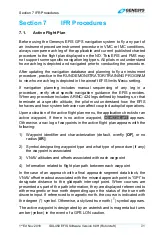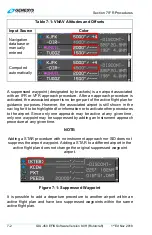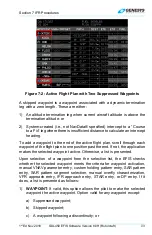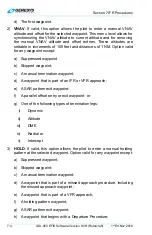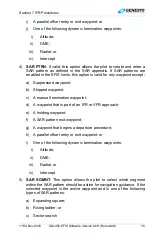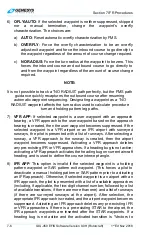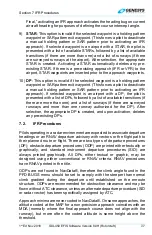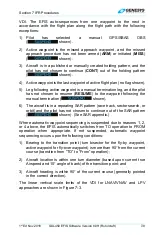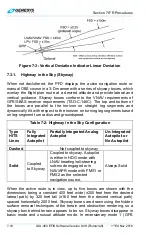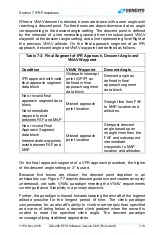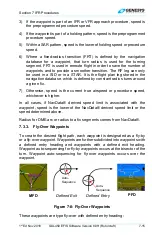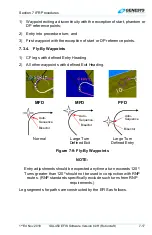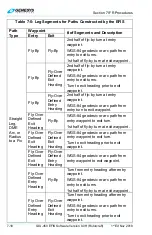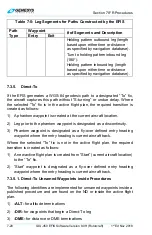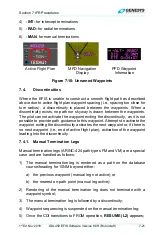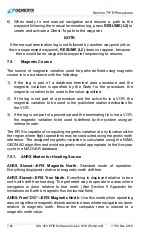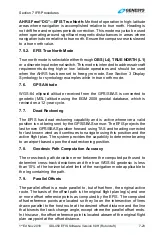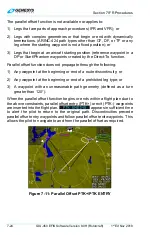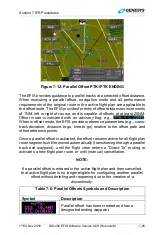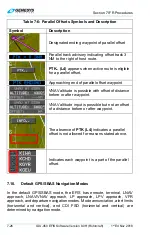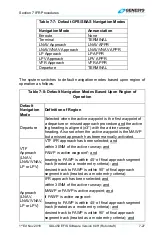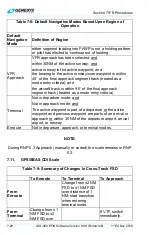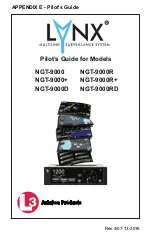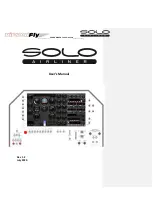
Section 7 IFR Procedures
1
st
Ed Nov 2018
IDU-450 EFIS Software Version 8.0H (Rotorcraft)
7-15
3) If the waypoint is part of an IFR or VFR approach procedure, speed is
the preprogrammed procedure speed.
4) If the waypoint is part of a holding pattern, speed is the preprogrammed
procedure speed.
5) Within a SAR pattern, speed is the lower of holding speed or procedure
speed.
6) Where a fixed-radius transition (FRT) is defined by the navigation
database for a waypoint, that turn radius is used for the turning
segment. FRT is used in enroute flight in order to save the number of
waypoints and to provide a smoother transition. The RF leg can only
be used in a SID or in a STAR. It is the flight plan leg stored in the
navigation database, which is defined by constant radius turns around
a given fix.
7) Otherwise, speed is the current true airspeed or procedure speed,
whichever is higher.
In all cases, if NavData® derived speed limit is associated with the
waypoint, speed is the lower of the NavData® derived speed limit or the
speed determined above.
Radius for DME arc or radius to a fix segments comes from NavData®.
7.3.3. Fly-Over
Waypoints
To create the desired flight path, each waypoint is designated as a fly-by
or a fly-over waypoint. Waypoints are further subdivided into waypoints with
a defined entry heading and waypoints with a defined exit heading.
Waypoint auto-sequencing for fly-by waypoints occurs at the bisector of the
turn. Waypoint auto-sequencing for fly-over waypoints occurs over the
waypoint.
Figure 7-8: Fly-Over Waypoints
These waypoints are type fly-over with defined entry heading:
Auto-
Sequence
Auto-
Sequence
Defined Exit
Defined Entry
MFD
PFD

